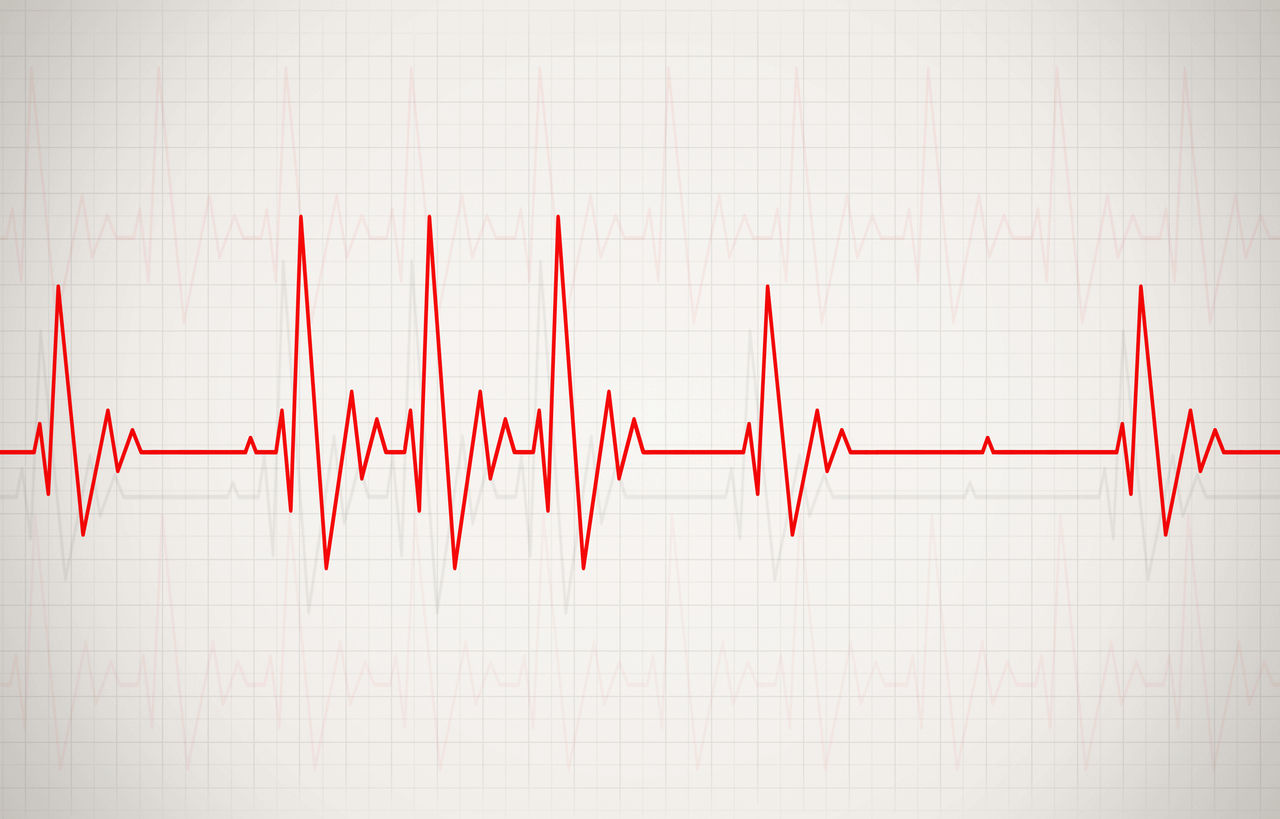Irregular Heartbeat Symptoms

Arrhythmias (irregular heartbeats) can cause many symptoms that you might not associate with your heart: shortness of breath, anxiety, fainting, and dizziness.
Electrical signals control your heartbeat. Sometimes they don’t work well. Your heart might beat too fast, too slow, or irregularly.
A pattern of irregular heartbeats is called an arrhythmia (uh-RITH-me-uh). Some people feel a single premature beat, sometimes called a palpitation. If these come in rapid succession, you might then feel a fluttering sensation in your chest or neck.
The fluttering feeling may be harmless and just something to get used to. Or you may have symptoms that need to be controlled with medication or other devices.
You can see an animation of arrhythmia here.
YOU MIGHT ALSO LIKE: What Is Atrial Fibrillation?
Types of irregular heartbeats
- Tachycardia (tak-ih-KAHR-dee-uh) is a fast heart. The resting heart rate is greater than 100 beats a minute.
- Bradycardia (brad-e-KAHR-dee-uh) is a slow heartbeat. The resting heart rate is fewer than 60 beats a minute. You may have a slower heart rate that isn’t caused by heart disease. A slower heart rate may be due to a high level of physical fitness, sleep, meditative breathing, and side effects from certain medications.
Types of tachycardia
- Atrial fibrillation (A-fib) is the name for a rapid, chaotic heartbeat, which sometimes continues until treatment. It is linked to stroke. If you or someone you know has A-fib, be sure to learn the symptoms of stroke, which tend to come on suddenly.
- Atrial flutter. This type is similar to A-fib but with more organized heartbeats.
- Supraventricular tachycardia. This category covers arrhythmias that start above the lower heart chambers. The typical pattern is that you abruptly feel your heart pounding. The episode may end just as abruptly.
- Ventricular fibrillation. This category includes arrhythmias that make your lower heart chambers quiver instead of contracting as they normally do to pump blood throughout your body. It occurs in people with heart disease or who have just been through a trauma like a car accident. It can cause a large drop in blood pressure.
- Ventricular tachycardia. This rapid, irregular heart rate starts with faulty electrical signals in the lower heart chambers, which prevent them from filling up properly with blood. If you don’t have heart disease, this may not be a serious problem. If you do, it may be a medical emergency.
- Sick sinus syndrome. The sinus node at the top of the heart is responsible for setting the pace of heartbeats. If it doesn’t work well, the heart can bounce between beating too slowly and too quickly. This is sometimes caused by scars near the sinus node.
- Conduction block. A block of the heart's electrical pathways can lead to incorrect signals.
- Premature heartbeats. Single extra beats sometimes alternate with the normal beat. It tends to feel like your heart skipped a beat. It is generally harmless. Premature heartbeats can occur while you are resting or sometimes in response to stress, exercise, or a stimulant like caffeine or nicotine.
Heart arrhythmias may not cause any signs or symptoms. A doctor may notice the irregular heartbeat when examining you for another health reason.
What are irregular heartbeat symptoms?
Symptoms of arrhythmias may include:
- A fluttering in your chest
- A racing heartbeat (tachycardia)
- A slow heartbeat (bradycardia)
- Chest pain
- Shortness of breath
- Weakness
- Anxiety
- Fatigue
- Lightheadedness or dizziness
- Sweating
- Fainting or near fainting
See a doctor if you have uncomfortable symptoms linked to the sensation of your heartbeat.
How do you tell the difference irregular heartbeat symptoms and a heart attack?
In a heart attack, blood flow to your heart is blocked, depriving it of oxygen. The tissue can be quickly damaged or destroyed.
It can be difficult to know if an irregular heartbeat or a heart attack is causing chest pain or shortness of breath. That’s why it’s important to get help, even if you’re not sure. Many people wait too long before they act. Most heart attacks begin slowly with mild pain or discomfort that can come and go.
If you think you may be having a heart attack, don’t delay.
Symptoms of a stroke
The American Stroke Association developed this easy-to-remember guide to help identify the signs of a stroke.
- F – Face drooping. Is one side of the person’s face drooping or numb? When he or she smiles, is the smile uneven?
- A – Arm weakness. Is the person experiencing weakness or numbness in one arm? Have the person raise both arms. Does one of the arms drift downward?
- S – Speech difficulty. Is the person’s speech suddenly slurred or hard to understand? Is he or she unable to speak? Ask the person to repeat a simple sentence. Can he or she repeat it back?
- T – Time to call 9-1-1. If any of these symptoms are present, dial 911 immediately. Check the time so you can report when the symptoms began.
How to help someone with a heart attack
If someone’s breathing and pulse stop, call 911 or the emergency number in your area.
If there's no one nearby trained in cardiopulmonary resuscitation (CPR), provide hands-only CPR. Push hard and fast on the center of the chest until paramedics arrive. You don't need to do rescue breathing. CPR can help maintain blood flow to the organs until an electrical shock (defibrillation) can be given.
If an automated external defibrillator (or AED) is available nearby, get the device and follow the instructions. It can deliver a shock that may restart heartbeats. No training is required, and the device is programmed to allow a shock only when appropriate.
Updated:
April 25, 2023
Reviewed By:
Janet O'Dell, RN